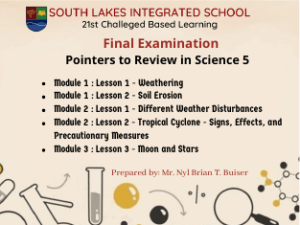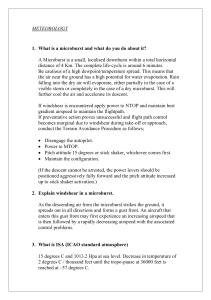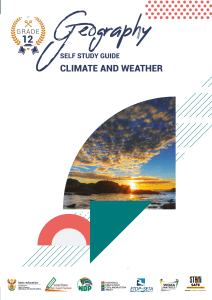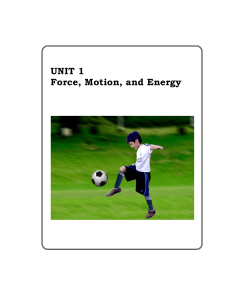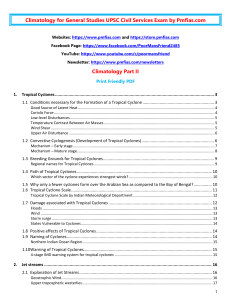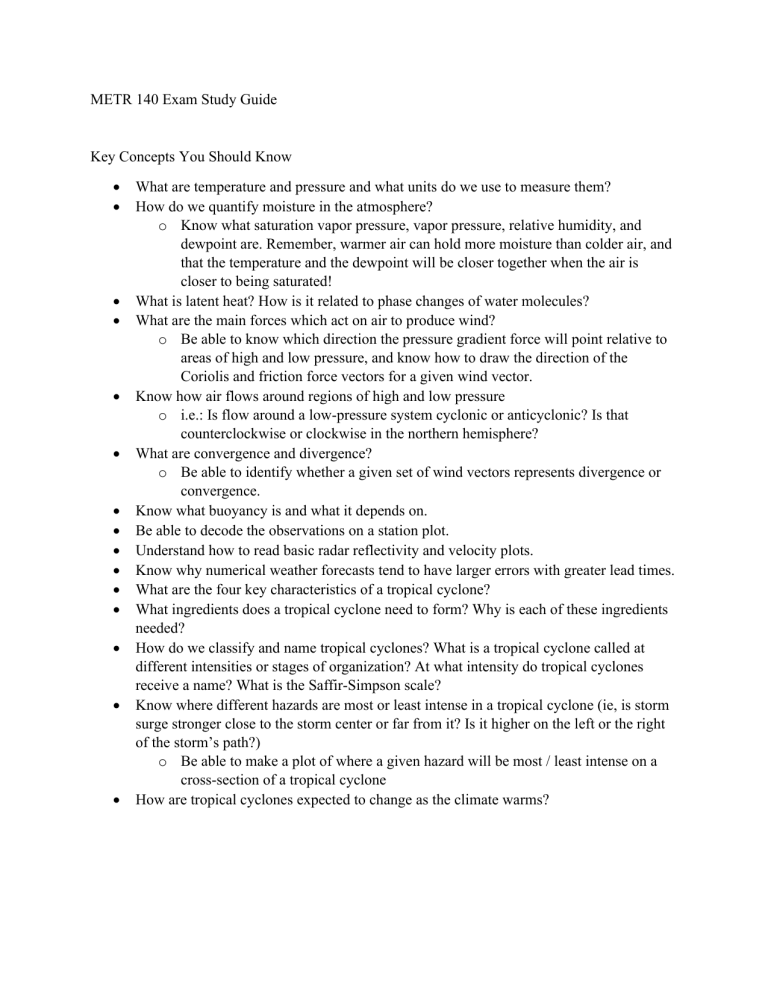
METR 140 Exam Study Guide Key Concepts You Should Know • • • • • • • • • • • • • • • What are temperature and pressure and what units do we use to measure them? How do we quantify moisture in the atmosphere? o Know what saturation vapor pressure, vapor pressure, relative humidity, and dewpoint are. Remember, warmer air can hold more moisture than colder air, and that the temperature and the dewpoint will be closer together when the air is closer to being saturated! What is latent heat? How is it related to phase changes of water molecules? What are the main forces which act on air to produce wind? o Be able to know which direction the pressure gradient force will point relative to areas of high and low pressure, and know how to draw the direction of the Coriolis and friction force vectors for a given wind vector. Know how air flows around regions of high and low pressure o i.e.: Is flow around a low-pressure system cyclonic or anticyclonic? Is that counterclockwise or clockwise in the northern hemisphere? What are convergence and divergence? o Be able to identify whether a given set of wind vectors represents divergence or convergence. Know what buoyancy is and what it depends on. Be able to decode the observations on a station plot. Understand how to read basic radar reflectivity and velocity plots. Know why numerical weather forecasts tend to have larger errors with greater lead times. What are the four key characteristics of a tropical cyclone? What ingredients does a tropical cyclone need to form? Why is each of these ingredients needed? How do we classify and name tropical cyclones? What is a tropical cyclone called at different intensities or stages of organization? At what intensity do tropical cyclones receive a name? What is the Saffir-Simpson scale? Know where different hazards are most or least intense in a tropical cyclone (ie, is storm surge stronger close to the storm center or far from it? Is it higher on the left or the right of the storm’s path?) o Be able to make a plot of where a given hazard will be most / least intense on a cross-section of a tropical cyclone How are tropical cyclones expected to change as the climate warms?

